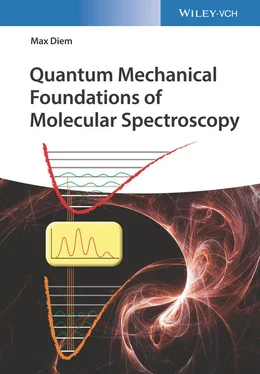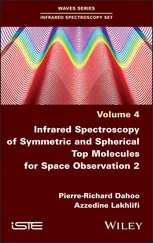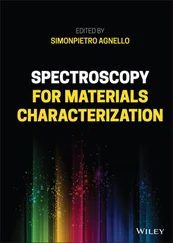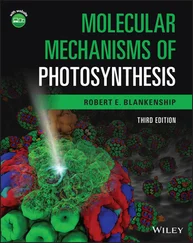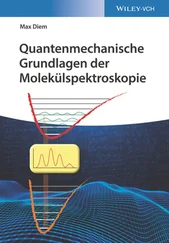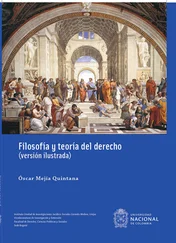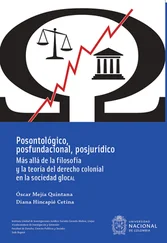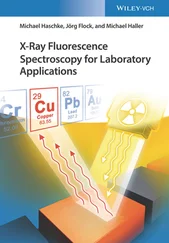14 Appendix 4Figure A4.1 Representation of data in different domains. (a) Graph of the in...Figure A4.2 (a) Intensity vs. time and (b) intensity vs. frequency plot of a...Figure A4.3 Approximation of a square wave function (heavy black line) by a ...Figure A4.4 Examples of Fourier transforms (FTs). (a) The FT of a delta func...Figure A4.5 Panel (a): Real part of a reverse transform of a spectrum back t...
1 Cover
2 Table of Contents
3 Begin Reading
1 iii
2 iv
3 xi
4 xii
5 xiii
6 xv
7 xvi
8 1
9 2
10 3
11 4
12 5
13 6
14 7
15 8
16 9
17 10
18 11
19 12
20 13
21 15
22 16
23 17
24 18
25 19
26 20
27 21
28 22
29 23
30 24
31 25
32 26
33 27
34 28
35 29
36 30
37 31
38 32
39 33
40 34
41 35
42 37
43 38
44 39
45 40
46 41
47 42
48 43
49 44
50 45
51 46
52 47
53 48
54 49
55 50
56 51
57 52
58 53
59 54
60 55
61 56
62 57
63 58
64 59
65 60
66 61
67 62
68 63
69 64
70 65
71 66
72 67
73 69
74 70
75 71
76 72
77 73
78 74
79 75
80 76
81 77
82 78
83 79
84 80
85 81
86 82
87 83
88 84
89 85
90 86
91 87
92 88
93 89
94 90
95 91
96 92
97 93
98 94
99 95
100 96
101 97
102 98
103 99
104 100
105 101
106 102
107 103
108 104
109 105
110 106
111 107
112 108
113 109
114 110
115 111
116 112
117 113
118 114
119 115
120 116
121 117
122 118
123 119
124 120
125 121
126 122
127 123
128 124
129 125
130 126
131 127
132 128
133 129
134 130
135 131
136 132
137 133
138 134
139 135
140 136
141 137
142 138
143 139
144 140
145 141
146 142
147 143
148 144
149 145
150 146
151 147
152 148
153 149
154 151
155 152
156 153
157 154
158 155
159 156
160 157
161 158
162 159
163 160
164 161
165 162
166 163
167 164
168 165
169 166
170 167
171 168
172 169
173 170
174 171
175 172
176 173
177 174
178 175
179 176
180 177
181 178
182 179
183 180
184 181
185 182
186 183
187 184
188 185
189 186
190 187
191 188
192 189
193 190
194 191
195 192
196 193
197 194
198 195
199 196
200 197
201 199
202 200
203 201
204 202
205 203
206 204
207 205
208 206
209 207
210 208
211 209
212 210
213 211
214 212
215 213
216 214
217 215
218 216
219 217
220 218
221 219
222 220
223 221
224 223
225 224
226 225
227 226
228 227
229 228
230 229
231 230
232 231
233 233
234 234
235 235
236 236
237 237
238 238
239 239
240 240
241 241
242 242
243 243
244 244
245 245
246 246
247 247
248 248
249 249
250 250
251 251
252 253
253 254
254 255
255 256
256 257
257 259
258 260
259 261
260 262
261 263
262 264
263 265
264 266
265 267
Quantum Mechanical Foundations of Molecular Spectroscopy
Max Diem

Author
Max Diem, PhD
Professor Emeritus
Department of Chemistry
Northeastern University
Laboratory of Spectral Diagnosis
Boston, MA
USA
CoveriStock 965444768 / © StationaryTraveller
Supplementary material for instructors, including a Solution Manual, available for download from www.wiley-vch.de/textbooks
All books published by WILEY‐VCHare carefully produced. Nevertheless, authors, editors, and publisher do not warrant the information contained in these books, including this book, to be free of errors. Readers are advised to keep in mind that statements, data, illustrations, procedural details or other items may inadvertently be inaccurate.
Library of Congress Card No.:applied for
British Library Cataloguing‐in‐Publication DataA catalogue record for this book is available from the British Library.
Bibliographic information published by the Deutsche NationalbibliothekThe Deutsche Nationalbibliothek lists this publication in the Deutsche Nationalbibliografie; detailed bibliographic data are available on the Internet at < http://dnb.d-nb.de>.
© 2021 WILEY‐VCH GmbH, Boschstr. 12, 69469 Weinheim, Germany
All rights reserved (including those of translation into other languages). No part of this book may be reproduced in any form – by photoprinting, microfilm, or any other means – nor transmitted or translated into a machine language without written permission from the publishers. Registered names, trademarks, etc. used in this book, even when not specifically marked as such, are not to be considered unprotected by law.
Print ISBN:978‐3‐527‐34792‐6 ePDF ISBN:978‐3‐527‐82961‐3 ePub ISBN:978‐3‐527‐82960‐6
Cover DesignSCHULZ Grafik‐Design, Fußgönheim, Germany
When the author took courses in quantum mechanical principles and chemical bonding in graduate school in the early 1970s, the course materials seldomly covered the fascinating interplay between spectroscopy and quantum mechanics, and textbooks of these days devoted the majority of space to derivations and mathematical principles and the discussion of the hydrogen atom and chemical bonding. While an understanding of these subjects is, of course, a necessity for further study, this book emphasizes a slightly different approach to quantum mechanics, namely, one from the viewpoint of a spectroscopist. In this approach, the existence of stationary energy states – either electronic, vibrational, rotational, or spin states – is considered the fundamental concept, since spectroscopy exists because of transitions between these states. Quantum mechanics provides the theoretical framework for the interpretation of experimental data. On the other hand, spectroscopic results provide the impetus for refining theories that explain the results. Classical physics cannot provide this framework, since the idea of stationary energy states violates the laws of classical physics.
Thus, the approach taken here in this book is to present early on, in Chapter 2, how the application of quantum mechanical principles leads necessarily to the existence of stationary energy states using the particle‐in‐a box model system. The third chapter then introduces the concept of spectroscopic transitions between these stationary states, using time‐dependent perturbation theory.
Читать дальше
